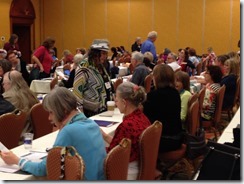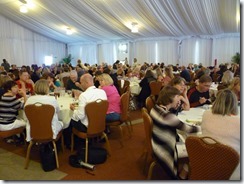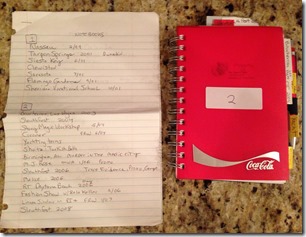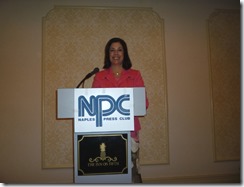Session Four: The Future of Publishing, Part 2
Novelists, Inc. Conference St. Pete Beach Oct. 2014
If you have a better sense of what you have going in to your career, you have a better chance of coming out where you want. You should have an audio book, because people are busy and commuting.
Globalization means growth in market places around the world. There is a huge global market for English language books.
What’s coming? Specialization of content, shorter content, fan fiction, micro-content. People are reading but not necessarily a novel. They read blogs, Facebook posts, and other material. We need to figure out how to monetize these things.
Another futuristic innovation might be micro-transactions where the reader clicks a button to send a dollar to an author. There will be more collaborative efforts like ACX, translations, and author collectives. Another trend might be personalization in how content is served. We need to be ready to embrace change and accept opportunities as they arise.
There’s a shift of empowerment toward authors because of technology. This is the slowest the change will go as it is right now. But you, the author, must continue to produce the very best book you can, or nothing else matters.
What authors need is data about what readers want and where to find them. The Book Industry Study Group collects book data. How do we turn this data into usable information for our careers? New retail models are coming. The digital disruption is going to be very destructive. Agents may go away [or they can be useful for subsidiary rights]. On the other hand, things are changing and that’s frightening, but they’re going to move forward.
When will there be an “Authors United”? Authors should use their scale to push our issues.
Brick-and-mortar booksellers have a disadvantage when a hardcover sells for nearly $30 and an e-book sells for $9.99. Retailers are concerned about surviving this price differential.
Windowing your release dates is crazy because readers will buy books in all formats. Your book should be released at the same time in e-book, paperback and hardcover. These are not different audiences.
We haven’t seen peer retailing emerge, and we need to be prepared. People communicate around the world in E-commerce. We need to be ready to sell directly to readers and to analyze the data on discount sales and on what platforms people want to receive their books.
Check out Wattpad, Payhip and Hugh Howey’s authorearnings.com
Note: Any errors in this article are due to my interpretations. As many ideas flew back and forth during each session, I mention what I gleaned from the panels, and you can take from it whatever serves your needs.
So what trends do you predict? And how are you preparing for them?
See all of my Photos in the Ninc album on my Facebook Page
Coming Next: BookBub


























